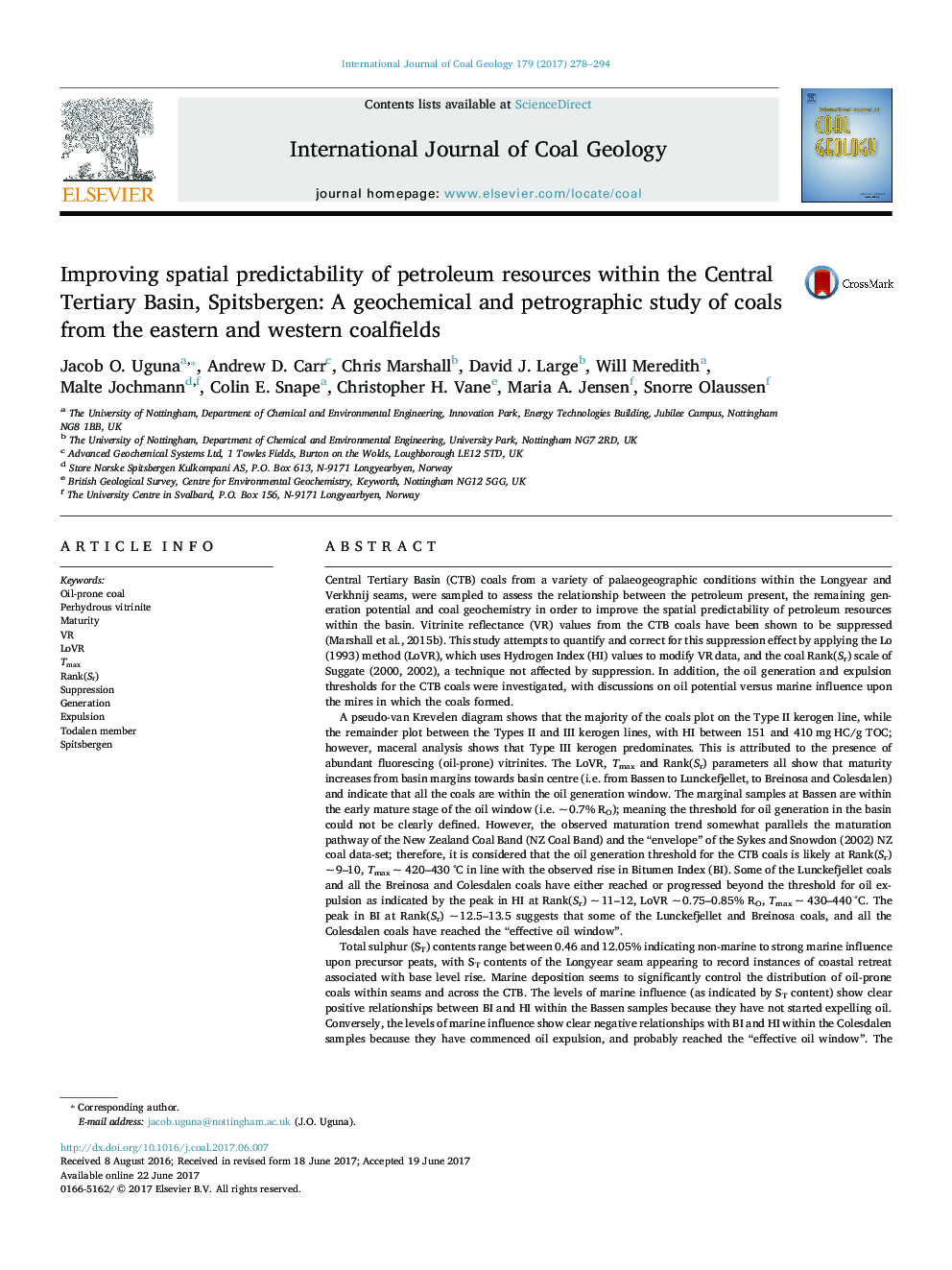| Article ID | Journal | Published Year | Pages | File Type |
|---|---|---|---|---|
| 5483635 | International Journal of Coal Geology | 2017 | 17 Pages |
Abstract
Total sulphur (ST) contents range between 0.46 and 12.05% indicating non-marine to strong marine influence upon precursor peats, with ST contents of the Longyear seam appearing to record instances of coastal retreat associated with base level rise. Marine deposition seems to significantly control the distribution of oil-prone coals within seams and across the CTB. The levels of marine influence (as indicated by ST content) show clear positive relationships between BI and HI within the Bassen samples because they have not started expelling oil. Conversely, the levels of marine influence show clear negative relationships with BI and HI within the Colesdalen samples because they have commenced oil expulsion, and probably reached the “effective oil window”. The more marine influenced coals appear to have commenced petroleum generation relatively earlier, which is a plausible explanation why the coals from the Lunckefjellet locality appear to be at different stages within the oil window.
Related Topics
Physical Sciences and Engineering
Earth and Planetary Sciences
Economic Geology
Authors
Jacob O. Uguna, Andrew D. Carr, Chris Marshall, David J. Large, Will Meredith, Malte Jochmann, Colin E. Snape, Christopher H. Vane, Maria A. Jensen, Snorre Olaussen,
